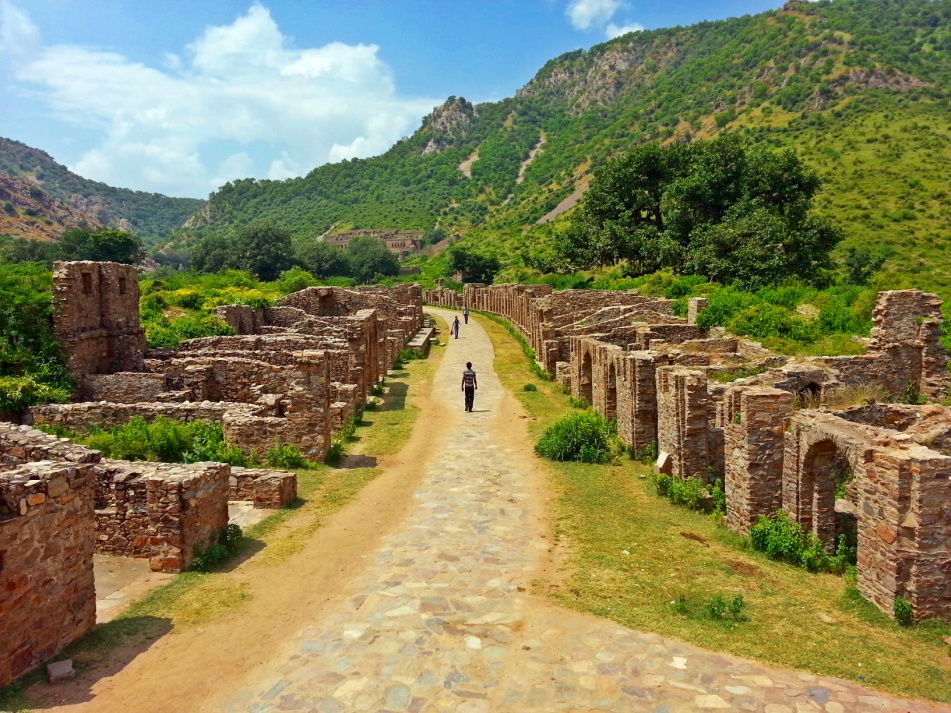Bhangarh
76 kms. from Jaipur

Bhangarh,a place between Jaipur and Delhi is a village in India that is famous for its historical ruins. It is in the Rajgarh municipality of the Alwar district in the state of Rajasthan. Bhangarh is at the edge of the Sariska Tiger Reserve.
Bhangarh is also a pre-historic site. The most remarkable of its buildings are the Hindu Mandir of Gopinath, Shiv (Someshwar), Hanuman, Ganesh, Vishal Devta, Lavina Devi and Keshav Rai. Other buildings include shops along the main road, several havelis, a mosque, and a palace. The palace was protected by two inner fortifications across the valley. The town is separated from the plain by ramparts with five gates.
The town was established in 1573 (VS 1631) during the rule of kaccwaha Rajput ruler of jaipur Bhagwant Das as the residence of his second son Madho Singh ( not Sawai Madho Singh, who ruled at Jaipur.), the younger brother of Emperor Akbar’s general, Man Singh I. Madho Singh participated in many campaigns with his father and brother. The next ruler of Bhangarh was his son Chhatra Singh[3] after whose death in 1630, Bhangarh slowly declined. When the Mughal Empire became weaker after the death of Aurangzeb, Jai Singh II attached Bhangarh to his state by force in 1720. After this Bhangarh diminished in population, and since the famine of 1783 (VS 1840) the town has remained uninhabited.
Entry to Bhangarh is legally prohibited between sunset and sunrise. A signboard posted by ASI (Archaeological Survey of India), which is a Government of India organization, specifies the instructions. While the board is written in Hindi, the instructions on it roughly translate into: “Entering the borders of Bhangarh before sunrise and after sunset is strictly prohibited. Legal action would be taken against anybody who does not follow these instructions”. Some other rules are there according to which no one is allowed to graze their animals after sunset.
Source : wikipedia

Places Of Interest
Bhangarh Fort – Asia’s most haunted town
BhangarhShare this:
Bhangarh Fort – Asia’s most haunted town Located in between Jaipur and Sariska National Park The Bhangarh Fort is a 17th-century fort built in the Rajasthan state of India. It was built by Man Singh I (one of the navratans of Akbar’s court) for his younger brother Madho Singh I. It was named by Madho … Continue reading Bhangarh Fort – Asia’s most haunted town →